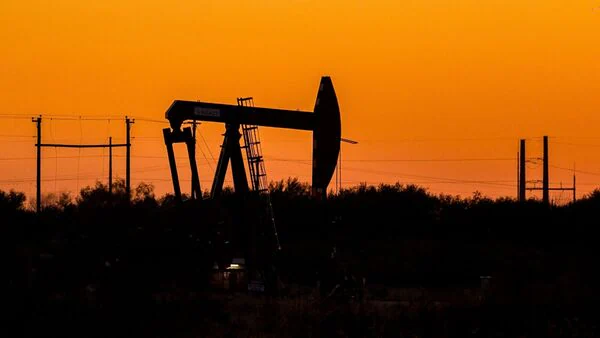Rising tensions between Israel and Iran, coupled with US airstrikes on Iranian nuclear sites, are fueling a surge in global crude oil prices. Experts weigh in on key support and resistance levels.
The escalating Israel-Iran conflict, now intensified by direct US military involvement, is roiling global oil markets. On Monday, oil prices surged amid fears of a potential blockade of the Strait of Hormuz—a crucial chokepoint for the world’s crude oil supply. As traders and governments brace for further instability, market analysts warn that a sharp spike in oil prices could be on the horizon.
Strait of Hormuz: Iran’s Strategic Card
Iran, a major OPEC oil producer and the third-largest among its members, holds a significant geopolitical advantage: it controls access to the Strait of Hormuz, the gateway through which nearly 20% of the world’s oil flows. Any disruption to this narrow shipping route, which links the Persian Gulf with the Arabian Sea, could severely disrupt global crude supply and drive oil prices through the roof.

With Tehran threatening retaliatory measures following US and Israeli strikes, the risk of closure looms larger than ever.
US Joins Conflict, Markets React
The oil market jitters began over the weekend when the United States launched precision strikes on three of Iran’s key nuclear sites, including the deeply fortified Fordo facility. Describing the action as a choice between “peace or tragedy,” the US government declared its intent to contain Iran’s nuclear ambitions.
This intervention has alarmed commodity investors worldwide, with fears that Iran could weaponize its control over oil shipping routes.
How Are Oil Prices Responding?
On Monday, June 23, 2025, oil futures responded immediately:
- West Texas Intermediate (WTI) spiked to an intraday high of $77.13 per barrel, before cooling slightly to $73.64, just below Friday’s close.
- Brent crude also reached a high of $77.66, before settling around $75.30 per barrel.
- In India, the MCX Crude Oil July contract touched a 2025 high of ₹6,550 per barrel, before pulling back to ₹6,448.
This volatility reflects heightened geopolitical risk and concerns over long-term supply disruptions.
Expert Take: Volatility Likely to Stay
According to Nirpendra Yadav, Senior Commodity Research Analyst at Bonanza Portfolio, the oil price movements are driven by fear rather than fundamentals:
“The situation escalated after US airstrikes, and traders are nervous about any potential closure of the Strait of Hormuz. A disruption here could send oil prices well beyond current levels.”
Yadav also noted that while a temporary spike is likely, long-term trends depend on whether diplomacy can de-escalate the situation.
Technical Outlook: Key Price Levels to Watch
Jigar Trivedi, Senior Research Analyst at Reliance Securities, shared a technical breakdown:
- Support level for MCX Crude (July): ₹6,100 per barrel
- Resistance level: ₹6,600 per barrel
“The contract has a bullish bias due to technical momentum and geopolitical risk. If Iran’s threats translate into real action, prices could shoot past ₹6,600 and even test higher ranges,” Trivedi said.
On the global front, Bonanza’s Yadav highlighted:
- Immediate support at: $67 per barrel
- Resistance at: $81 per barrel
If WTI breaks above this zone, prices may test $85 or beyond, especially if the Strait of Hormuz sees any real disruption.
India’s Strategy: Diversifying Oil Imports
India, one of the world’s largest oil importers, is closely monitoring the situation. According to recent trade data, India has ramped up oil imports from Russia and the United States in June to mitigate potential supply disruptions from the Gulf.
Petroleum Minister Hardeep Singh Puri recently commented that “contingency measures are in place” and that India will prioritize energy security without contributing to global panic.
Could Prices Cool Off?
Despite the surge, there’s still room for correction if the situation eases. Trivedi noted that oil prices briefly dipped to $73 per barrel after Iran indicated openness to dialogue before the US intervention.
“If both sides pull back and diplomacy resumes, oil may consolidate near $75. But the market remains headline-driven and volatile,” he added.
Brace for a Bumpy Ride
The Israel-Iran conflict, now compounded by US involvement, has rattled the global oil market, putting pressure on prices and investor sentiment. While technicals suggest bullish momentum, the outcome ultimately hinges on whether diplomacy can defuse rising tensions—or whether the Strait of Hormuz becomes the next flashpoint in this high-stakes geopolitical chess game.
